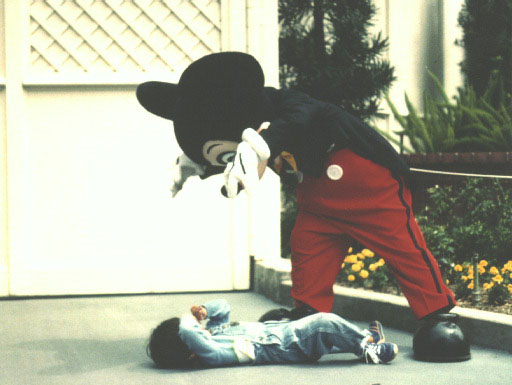When you think of the Seattle Aquarium, do you think of a bunch of white-jacketed scientists sitting around a pond, obsessing over algae counts or water quality? Well, that’s because you’re not very smart, because the aquarium isn’t anything like that at all.
As it turns out, staring slack-jawed at a bunch of fish for hour after hour is not nearly as boring as you might imagine. And that’s just the beginning of the exciting possibilities available to you when you visit the very best aquarium in the entire world, right here in Seattle.
In order to truly take in the majesty of the Seattle Aquarium, you need to set aside a whole day. To make sure you beat the crowds, arrive at least three hours before opening. It’s important to budget your time wisely, otherwise you could easily spend twelve hours poking the anemones in the touching pond. You want to make time to experience all of the aquarium’s exciting exhibits, like walking through the five-thousand-foot-tall thunder dome, playing a game of “guess which motionless seal is dead,” and enjoying the carefree otters, romping around like they don’t have a care in the world, their little souls not crushed by the unending grind of the empty emotionless existence that your own life has become.
Did you know that at the Seattle Aquarium, you can kill and skin a great white shark with your bare hands? Actually, that’s not true, but you have to admit it would be pretty awesome if it were. In reality, the uptight staff at the aquarium won’t allow visitors to kill any of the marine life, but when they aren’t looking you can usually get away with casting an icy death stare in the general direction of the seahorse tank.
Little children from around the world come to Seattle, just to experience the aquarium. “This aquarium is so amazing,” said Mahir Omakresh, a twelve-year-old from Bangladesh. “My favorite part is how they don’t give you beatings for looking at the fishes for more than a few seconds.”
But going to the aquarium isn’t just about seeing fish. It’s also a great place to gain a proper sense of guilt and shame for all the ways you are personally responsible for destroying the fragile Puget Sound ecosystem with dozens of your routine daily activities. For example, at the Seattle Aquarium you will learn that every time you brush your teeth, the toothpaste you spit into the sink drains directly into the Puget Sound, killing hundreds of fish and millions of innocent bacteria.
Don’t delay, plan your trip to the Seattle Aquarium today. Seriously, call your boss and give him some lame excuse about peak oil or something, and get down to the aquarium. NOW.












Poor Mahir.
He probably deserves it.
I think the Seattle Aquarium is quite uhh what word am i looking for im not shure but its not all that bad it isnt horrendous though i really truly like it:]] and my review is good:]]
Alfredm Matthew did an ehhhMAZINGG job
Yours Truly,
Shelly
oh and p.s jvon know one diserves a beating
Since you mention Peak Oil, you should know what it is. Global oil production is now declining, from 85 million barrels per day to 60 million barrels per day by 2015. At the same time demand will increase 14%. This is like a 45% drop in 7 years.
No one can reverse this trend, nor can we conserve our way out of this catastrophe. Because the demand for oil is so high, it will always be higher than production; thus the depletion rate will continue until all recoverable oil is extracted.
We are facing the collapse of the highways that depend on diesel trucks for maintenance of bridges, cleaning culverts to avoid road washouts, snow plowing, roadbed and surface repair. When the highways fail, so will the power grid, as highways carry the parts, transformers, steel for pylons, and high tension cables, all from far away. With the highways out, there will be no food coming in from “outside,” and without the power grid virtually nothing works, including home heating, pumping of gasoline and diesel, airports, communications, and automated systems.
This is documented in a free 45 page report that can be downloaded, website posted, distributed, and emailed: http://www.peakoilassociates.com/POAnalysis.html